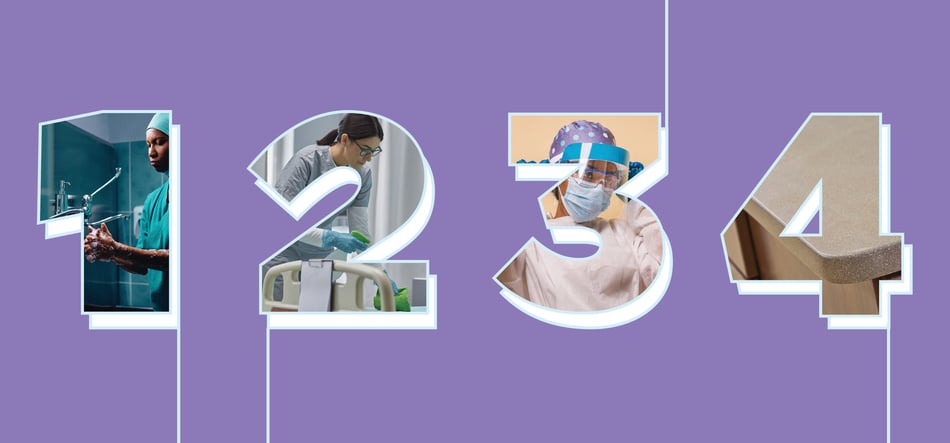4 Critical Steps on the Path to Zero Harm

In earlier posts we discussed three major innovations that led to the formalization of infection control. Now we'll see what four elements make up a hospital's infection control strategy.
1. Hand hygiene
Remember poor Dr. Semmelweiss? If he lived today, he would be glad to see that hand hygiene finally receives the recognition it deserves. However, it just might push him over the edge to learn that, on average, doctors still only wash their hands 50% of the time between patients. Hand-washing campaigns do much to remind staff, but research shows that efforts must be on-going rather than short-term "events." It is important for patients and visitors to maintain hand hygiene as well as the general public. No special techniques or soaps are required - just regular soap and water for 20 seconds, making sure to clean between fingers. Oh, and drying them properly after you wash is also important: Using paper towels is the best way to remove bacteria (hot-air dryers actually increase bacterial levels by spraying them around the environment.)
2. Cleaning, disinfection and sterilization
These are actually three different processes. Cleaning refers to the umbrella action of removing unwanted substances from an object. Disinfection refers to cleaning with a liquid chemical or even UV light and kills most microorganisms (but not spores). Sterilization is the strongest type of cleaning and refers to the process of killing every microorganism present. Sterilization renders objects "sterile," and requires the use of a specific device such as an autoclave, radiation, or specific liquids such as formaldehyde. What is important to know is that the first, cleaning, is always necessary in order for the other two to work. That is why even a bleach product or other EPA registered disinfectant will state on its label that the surface "must be thoroughly pre-cleaned to remove excess organic debris, rinsed, and rough dried."
3. Personal protective equipment (PPE)
These include gowns, masks, scrubs, caps, shoe covers, shields, goggles, and even respirators. Which items are used depends on the specific case. In ICUs, for example, visitors may have to wear PPE. In cases of highly contagious and lethal infections, head-to-toe coverage may be required.
4. Germ-killing surfaces
The hard and soft materials that make up surfaces in hospital and healthcare settings harbor bacteria. Infusing these materials with germ-killing technology can reduce the number of germs present in the setting, called the bioburden. However, most "antimicrobial" surfaces simply slow the growth of bacteria, and only the bacteria that causes odor and discoloration. Only two surfaces are EPA-registered for Public Health Claims that they actively kill bacteria: metallic copper alloys (sheets of copper) and EOScu, a preventive biocidal hard surfaces made with cuprous oxide.
The goal is to reach zero infection. Human processes can only get us so far - human error (such as neglecting hand washing or not following cleaning protocols) will always rear its ugly head. We must use, and continue to invent, preventive technologies that help us close the gap.
Editor's Note: This post was originally published in December 2014 and has been updated for freshness, accuracy and comprehensiveness.
![EOScu Logo - Dark - Outlined [07182023]-01](https://blog.eoscu.com/hubfs/Eoscu_June2024/Images/EOScu%20Logo%20-%20Dark%20-%20Outlined%20%5B07182023%5D-01.svg)

![[infographic] Modes of Transmission Download and share!](https://no-cache.hubspot.com/cta/default/216314/interactive-178287789067.png)



